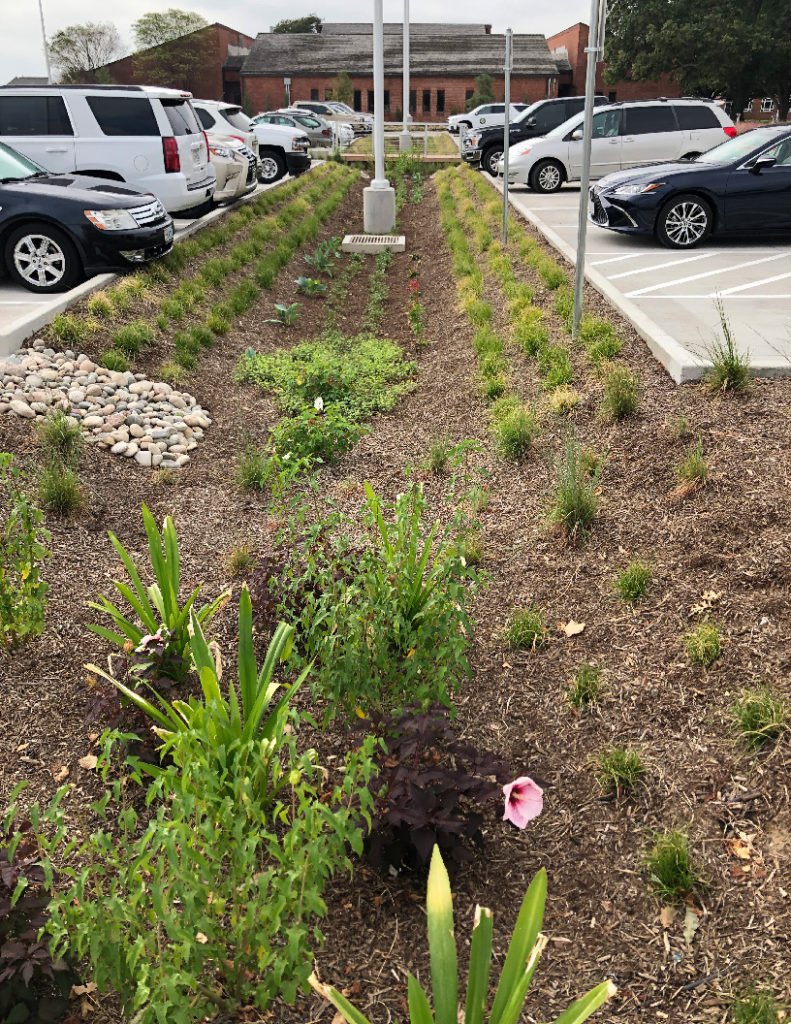A team of Texas A&M AgriLife engineers in Dallas has developed a method for showing where flooding in a city can be alleviated by green stormwater infrastructure — systems of plants and soil designed to mimic nature’s ability to absorb and filter water.

The team in a recent analysis used GIS data mapping and digital modeling to show how green stormwater infrastructure could alleviate flood-prone areas across Dallas — the fastest-growing metropolitan area in the U.S. The analysis accounts for changing climate and increased major rain events expected over the next 45 years.
The team’s findings appear in a joint report among The Nature Conservancy and Texas A&M AgriLife Extension Service, with the City of Dallas and Trust for Public Land.
A universal method
The method they developed serves as a model for addressing stormwater flooding in any city. It has been shared with other states for broad implementation, said Fouad Jaber, Ph.D., who has a split appointment with AgriLife Extension and Texas A&M AgriLife Research in Dallas and is a professor in the Texas A&M Department of Biological and Agricultural Engineering.
“With changing rainfall patterns, it’s crucial that cities across the U.S. evaluate their drainage network capacity to handle current and future rain events, and address any shortcomings with resilient, nature-based solutions like green stormwater infrastructure,” Jaber said.
His colleagues at the Texas A&M AgriLife Research and Extension Center at Dallas included AgriLife Research scientist Bardia Heidari, Ph.D., and AgriLife Extension graduate assistant Victoria Prideaux.
Major findings shown in The Nature Conservancy report for the Dallas analysis — funded by Lyda Hill Philanthropies — include:
- Climate change is predicted to increase the number and overall impacts of stormwater “system hotspots”—locations where the drainage network is undersized and likely to contribute to inlet overflows and areal flooding during rain events. For the storms modeled in this study, climate change resulted in an average increase of 26% in the number of drainage system hotpots, compared to current conditions.
- Green stormwater infrastructure was found to reduce overflows for all storms modeled by 17%-31% and to delay peak flows potentially reducing areal flooding, creek flows and overbank flooding.
- Substantial, cost-effective opportunities have been identified for green stormwater infrastructure to improve stormwater management in Dallas, particularly within Joes’ Creek, Cedar Creek and Five Mile Creek watersheds, as well as portions of the White Rock Watershed.
- Green stormwater infrastructure was found to cost 77% less than upgrading to gray infrastructure alone to meet modeled overflows; a combination of green and gray provides the maximum cost-effective benefits.
- Of the systems studied, bioretention areas—particularly in parking lots—offer the greatest opportunities for community impacts. Bioretention areas can capture, treat and infiltrate portions of surface stormwater runoff through engineered soil, before draining to the gray stormwater network. Rain gardens and cisterns were also found to offer substantial distributed opportunities for health and resilience.
Solutions for the future at the forefront of policy
The analysis provides key science for planners, policymakers and other community leaders to consider green stormwater infrastructure as a valuable tool for flood-risk reduction, water quality improvement and enhanced biodiversity—all while increasing safety and conserving funds.
Like in other U.S. cities, the drainage needs in many areas of Dallas have outgrown the capacity of its existing stormwater drainage system. With rapid population growth, much of the region’s natural land cover is being converted to human-made surfaces like asphalt and concrete, which do not absorb rainfall.
“This analysis is an excellent reminder that nature-based solutions should always be at the forefront of policy and planning discussions,” said Suzanne Scott, Texas state director at The Nature Conservancy. “Green infrastructure provides multiple benefits for city residents—especially in rapidly growing areas like Dallas-Fort Worth.”






![[Video] Easy Aerial’s Drone-in-a-Box Automates Crop Scouting](../ext/resources/images/2022/April/Easy-Aerials-Drone-in-a-Box-Automates-Crop-Scouting.jpg)





